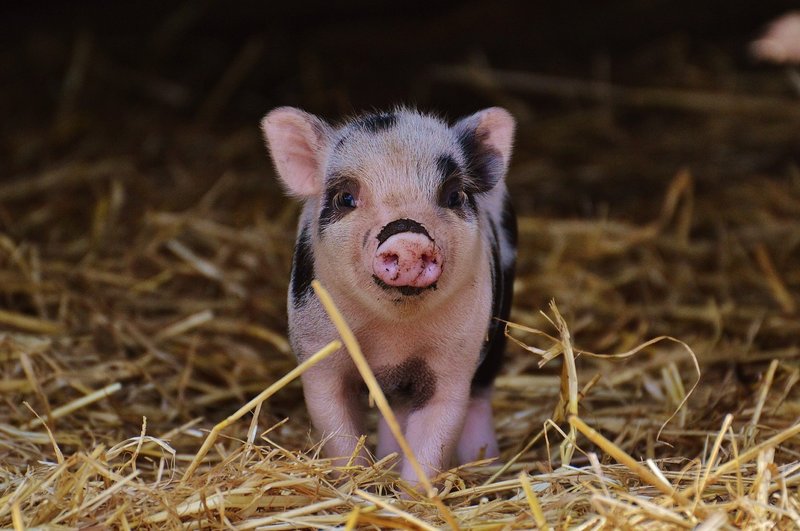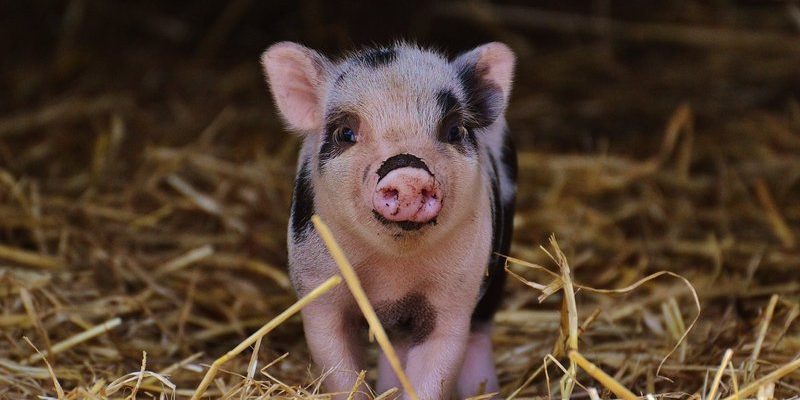
So, how much does it actually cost to keep a pet pig? Well, it’s not just about the initial purchase price. There are ongoing costs for food, housing, care, and more. Let’s break it down step by step, just like you would if you were calculating the budget for a new home. Whether you’re just curious or seriously considering bringing a pig into your life, this guide will help you understand if your budget can handle it.
Initial Purchase Cost of a Pet Pig
The first thing you’ll want to consider is the initial cost of buying a pig. Pig prices can vary widely based on factors like breed, age, and location. For instance, mini pigs often start around $1,000 and can go up to $3,000 or more, especially if you’re looking for teacup varieties.
But here’s the thing: it’s not just about the sticker price. When purchasing a pig, you’ll want to ensure you’re buying from a reputable breeder who prioritizes the pig’s health and well-being. This might add a few extra bucks, but it’s worth it to avoid future vet bills due to health issues.
Also, don’t forget to factor in the potential extra costs for supplies on that first day. You’ll need a sturdy fence to keep your pig safe, food and water bowls, bedding, toys, and a cozy shelter. All of these can easily add up to a couple hundred dollars.
Feeding Your Pet Pig
Next up is feeding costs. Pigs are omnivores, which means they have a varied diet, similar to us humans. They typically need pig pellets specifically formulated for their nutritional needs, along with fresh fruits and vegetables.
A small pig might eat about 1–2 pounds of pellets a day, which can cost around $15 to $40 per month. But that’s just for the basics! You’ll probably want to give your pig some treats, too. Apples, carrots, and even some grains can be part of their diet, so you might end up spending an additional $20–$30 monthly. Overall, you’re looking at around $35 to $70 a month for food, depending on your pig’s size and appetite.
Here’s a little tip: if you plan on growing a garden, you can also use some of your homegrown veggies as piggy snacks. Not only does this save money, but it’s also a fun way to engage with your pet!
Veterinary Care for Your Pet Pig
Just like any pet, pigs need regular veterinary care, and this can be a significant part of your budget. Before you even bring a pig home, you’ll want to think about some initial veterinary expenses, which typically include vaccinations and a health check-up. This might set you back anywhere from $200 to $400.
After that, routine care—like annual check-ups, vaccinations, and parasite control—can run around $100 to $300 each year. Pigs can also be susceptible to specific health issues, so setting aside a little extra for emergencies is smart. Depending on where you live, you could budget an additional $500 to $1,000 per year for unexpected vet visits.
To put it simply, make sure you’re ready for these vet visits, as they are essential to keeping your pig happy and healthy.
Housing and Shelter Needs
Now, let’s talk about where your pig will live. Pigs need a secure, comfortable space that protects them from the elements and allows them room to roam. If you’re thinking about building a shelter, materials and tools can cost anywhere from $300 to $1,000, depending on how fancy you get.
You’ll also need a secure outdoor area. Pigs are notorious for being escape artists, so a sturdy fence is crucial. Depending on the size of your yard and the type of fencing you choose, this can add another $200 to $1,500 to your budget.
Of course, you can get creative here. Some people use repurposed materials, which can save you money. But always keep your pig’s safety in mind when planning their living situation.
Insurance and Licensing Costs
Another aspect to consider is liability insurance and licensing fees. In many places, you’ll need a permit to keep a pig as a pet. The cost of these permits can range from $50 to a couple hundred dollars, depending on your municipality.
Additionally, some pig owners choose to invest in liability insurance, which can offer extra peace of mind. Insurance costs can vary, but budgeting around $300 to $600 annually is a good start. It can give you financial protection in case of accidents or mishaps that could occur, which is especially important considering the unique nature of pigs.
Additional Costs for Toys and Enrichment
Let’s not forget about toys and enrichment! Pigs are intelligent creatures and need mental stimulation just as much as they need physical activity. If you don’t provide toys, they may resort to boredom behaviors, which can lead to destructive habits in your home.
You can expect to spend around $50 to $150 a year on toys, treats, and other enrichment activities. Think about puzzle feeders, chew toys, and even swimming pools for those hot summer days. The more you engage your pig, the happier and healthier they’ll be.
Additionally, consider taking your pig out for some adventures, like trips to the park or playdates with other pigs. These outings can be a fun way to bond, but they might also involve transportation costs or other unexpected expenses.
In Conclusion
So, how much does it cost to keep a pet pig? Overall, you’re looking at a budget that could range from around $1,500 to over $3,000 in the first year, with ongoing annual costs between $500 to $2,000. This can vary widely based on factors like local prices, your pig’s needs, and how you choose to care for them.
Owning a pig is a big commitment, but if you’re ready for the financial and emotional responsibilities, they can be a wonderfully unique addition to your family. Just like any pet, they offer love, joy, and an abundance of quirky behaviors that will keep you entertained for years to come. If that sounds like the kind of companionship you’re looking for, then go ahead and embrace this adventure!

